Johor-Singapore SEZ: Passport-free travel hailed as ‘game-changer’ but observers debate size, scope of proposed zone
An analyst says that defining the specific location of the SEZ - especially in Malaysia - is essential to give potential investors visibility of the project’s prospects.
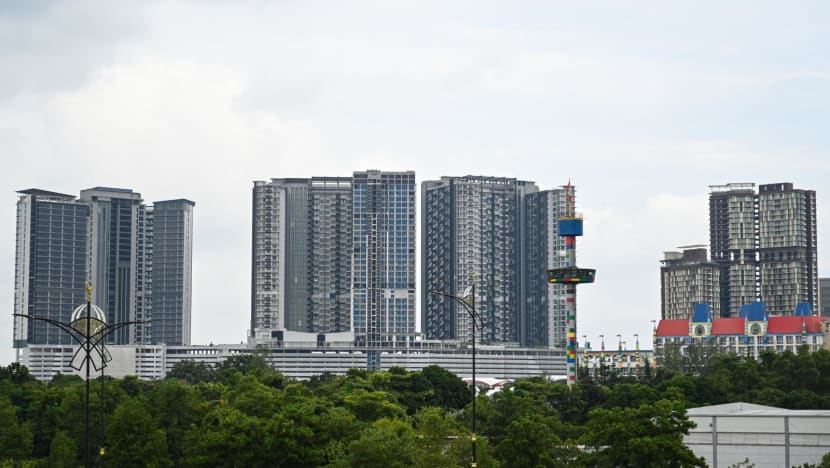
General view of Medini City located in Iskandar Puteri in the southern Malaysian state of Johor. (Photo: CNA/Zamzahuri Abas)

This audio is generated by an AI tool.
JOHOR BAHRU: Passport-free travel between Singapore and the southern Malaysian state of Johor is a potential ”game-changer” that could expedite the development of a special economic zone explored by the two countries, industry leaders say.
Beyond the usage of a QR code system to cross borders, analysts also lauded plans to potentially allow digitised processes for cargo clearance at the land checkpoints.
However, some have stressed the need for the geographical scope of the Johor-SIngapore Special Economic Zone (SEZ) - particularly that on the Malaysia side - to be defined early on in the discussions so that there can be a clear blueprint on the investment focus of the zone, though they have differing views on its size and location in the Johor state.
Mr Tan Wee Tiam - head of research and investment services at property consultant firm KGV International which is headquartered in Johor Bahru - told CNA that if implemented correctly with political will on both sides, the SEZ can offer a win-win solution and boost the economies of Singapore and Malaysia.
“Singapore will concentrate on the capital-intensive and progress towards knowledge-based industries while Iskandar Malaysia will play the complementary role as the base for land and other resources. In the process, both will contribute in terms of capital, networking, knowledge, resources and manpower,” said Mr Tan.
“Now that the first agreement has been signed, the SEZ will soon enable desired investment to take off. The key is to bring in desired industries to create greater multiplier effects to the economies for both countries,” he added.
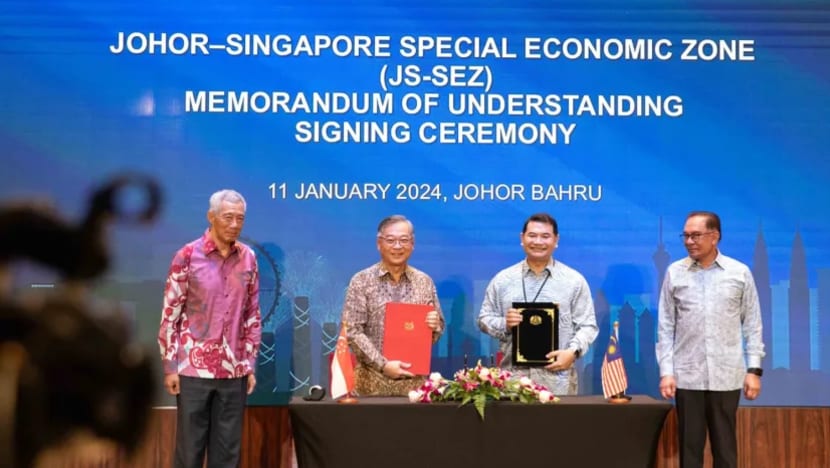
A Memorandum of Understanding (MOU) was signed by Singapore’s Minister for Trade and Industry Gan Kim Yong and Malaysia’s Minister of Economy Mohd Rafizi Ramli on Jan 11 to develop a framework for a legally binding agreement on the SEZ.
Prime Minister Lee Hsien Loong and his Malaysian counterpart Anwar Ibrahim witnessed the signing.
In a joint statement released after the signing, Singapore's Ministry of Trade and Industry (MTI) and Malaysia’s Ministry of Economy said that under the MOU, both countries will explore several initiatives that will "build towards" the SEZ.
These include more expeditious clearance of people at land checkpoints as well as the facilitation of renewable energy cooperation between the two countries.
PASSPORT-FREE TRAVEL WILL TRIGGER ECONOMIC MULTIPLIER EFFECT
Analysts said that the proposal to ease immigration processes was a “game-changer” because many other SEZs around the world do not offer “passport-free” clearance for travellers commuting across international borders within the zone.
Mr Ong Kian Ming, director of the philosophy, politics and economic programme at Malaysia’s Taylor's University, told CNA that both passport-free travel and digitised cargo clearance will allow investors, employers, and employees on both sides of the border to increasingly see Johor and Singapore as part of an integrated area where goods and people can move freely and efficiently.
“This will have significant multipliers in the facilitation of greater economic activity beyond what can be seen at the current juncture,” said the former deputy minister of trade and industry who is also a member of the Democratic Action Party.
“It has the potential of making the SEZ an even more economically vibrant area compared to Shenzhen and Hong Kong.”
The view is echoed by KGV International’s Mr Tan who said that the free flow of manpower and goods is the “prerequisite to integrate the two economies”.
“Seamless collaboration for a cross-country SEZ is only possible when the bottlenecks at the customs and ports are cleared,” said Mr Tan.
“The proposals of using such technologies (ie. passport-free QR code clearance system and digitised process for cargo clearance) are definitely more efficient. It facilitates and improves flow of people and goods from both countries,” he added.
The Causeway between Singapore and Johor Bahru is considered one of the busiest land checkpoints in the world. Around 200,000 travellers commute across each day.
However, in spite of the hassle-free benefits of passport-free travel, economist Walter Theseira from the Singapore University of Social Sciences (SUSS) noted that there are other immigration safety aspects that must be considered.
"Does passport-free border clearance mean that once cleared, the traveller has full access to the rest of Peninsular Malaysia? Or is it just access to the SEZ, with access to the rest of Malaysia requiring a different arrangement?
"Obviously, this question does not arise for passport-free entry into Singapore since it is meaningless to draw a boundary within Singapore for this, but it could be logical for Malaysia to draw an internal boundary for such access," said Assoc Prof Theseira.
He added that he does not anticipate that Malaysia will have a separate internal border checkpoint after the SEZ, but rather expects a different clearance process for travellers who declare they intend to travel further than the SEZ.
Other than the pledges to ease immigration requirements, Mr Tan lauded the other proposals listed in the joint statement released after the MOU signing.
These include curating training and work-based learning initiatives to address talent and skill gaps for relevant industries in the SEZ as well as a “a one-stop business/investment service centre” in Johor to facilitate the application process for various approvals and licences for Singapore businesses to set up companies in Johor.
Mr Tan said: “The list of initiatives above just shows the commitment and mutual enthusiasm to make the Johor-Singapore Special Economic Zone a success.”
However, observers maintained that both governments must showcase commitment in seeing through the proposal by for instance defining clearly the geographical scope on the Malaysia side of the SEZ.
GEOGRAPHICAL SCOPE IN JOHOR MUST BE DEFINED
Analysts have noted that the MOU inked on Thursday did not indicate whether the SEZ will encompass the whole of Iskandar Malaysia - the main southern development corridor in Johor.
Iskandar Malaysia spans four major districts in the southern state - Johor Bahru, Iskandar Puteri, Pasir Gudang and Kulai.
The Iskandar Malaysia project was conceptualised in 2006 under the Malaysian government led by then-prime minister Abdullah Ahmad Badawi. It was supposed to grow by tapping on synergies with neighbouring Singapore, similar to how Shenzhen in China developed by leveraging on the economic progress of its neighbour Hong Kong.
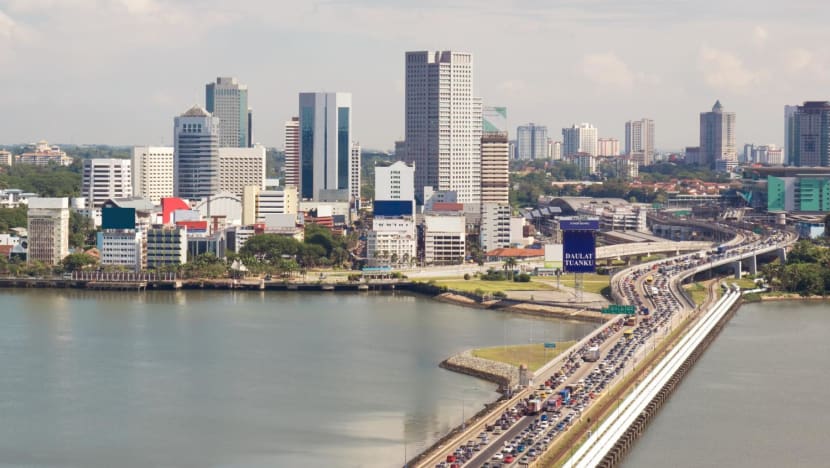
However, the Iskandar Malaysia project has fizzled out in recent years and observers maintain that now with the SEZ project formally inked, there is a second wind for the area to gain traction and fulfil its potential as a regional economic hub.
There have been conflicting reports on whether the SEZ in Malaysia would encompass the entire portion of Iskandar Malaysia, part of it, or even the entire Johor state.
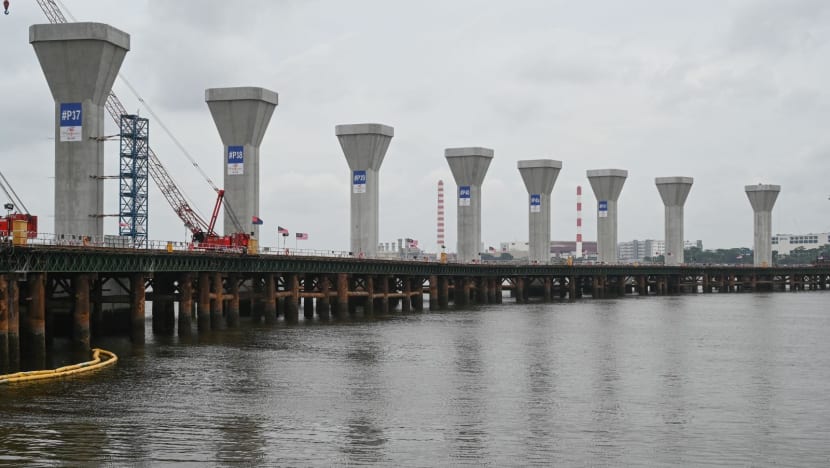
Observers maintain that whichever the case, the Malaysian government should define the specific location clearly so that investors and businesses based in Singapore who are planning to expand or outsource operations will have a better idea if the Johor SEZ is a viable option.
Singapore-based author and public policy advisor Devadas Krishnadas told CNA that defining the location for the SEZ is a “foundational parameter” and will make interested investors decide on the business case for “deploying sticky capital and capacity into the SEZ”.
"Moving swiftly to define the specific location and boundaries is essential to give potential investors visibility of the project’s prospects as would the need to make clear and logical commitments on physical and digital connectivity between not only the SEZ and Singapore but also between the SEZ and wider Peninsula Malaysia and beyond,” said Mr Devadas.
Mr Ong also shared similar sentiments, and he suggested that beyond the Iskandar Malaysia southern development corridor, the SEZ should include the central, northern and eastern parts of Johor.
He opined that cities in these areas have not developed at the same rate as the southern part of Johor, and that this presented a good opportunity to boost foreign investment there for industries such as data centres and renewable energy.
“To give the SEZ some economies of scale, at the very least, it should cover the Greater JB area which includes Kulai and Pasir Gudang,” said Mr Ong.
“Places like Kluang, Batu Pahat, Muar, Segamat and even Mersing have been somewhat left behind in the development process compared to southern Johor and the greater JB area.
“The SEZ will be a much-needed catalyst for development for these places in Johor with new ideas and initiatives including the development of new industrial parks, smart and precision agriculture projects, and tourism activities,” added the former member of parliament.
However, other observers have urged the Malaysian government to start small and take a “laser-focused” approach instead and designate an area within Iskandar Malaysia to be part of the SEZ.
KGV International’s Mr Tan told CNA: “To ensure ease of management and concerted effort on the said SEZ, it is advisable to designate a single node as the SEZ instead of the whole of Iskandar Malaysia.
“Concentrate all attention and pull all resources to develop the specific location and make it a successful model would probably be a better way. Other nodes can be replicated in subsequent phases."
Mr Tan explained that this approach is more realistic because the government would need to ensure that access roads in these industrial zones are well connected to the land checkpoints, airports as well as ports.
“There are a lot of ‘jig-saw puzzles’ to be pieced up to ensure efficient flow of people and goods,” said Mr Tan.
“Focus will be the key. It is perhaps more beneficial to do it in phases lest the scope for the initiative become too diverse right from the beginning,” he added.
Mr Ishmael Ho, chief executive of Malaysian real estate firm Ho Chin Soon Research, agreed that the area within Johor to be designated as the SEZ should be a “smaller zone within Iskandar Malaysia”.
“To designate the whole of Johor state is too big, even the whole of Iskandar Malaysia is too big. It needs to be a smaller zone (so it has a higher chance of being successful),” Mr Ho told CNA.
JOHOR SULTAN AS KING WILL BE KEEN TO ACCELERATE SEZ DISCUSSIONS
Regardless of the size of the SEZ, analysts agree that both governments need to demonstrate political will to see through the project in the short term. This is particularly important with important leadership transitions for both countries on the horizon.
The Sultan of Johor is set to ascend as Malaysia’s king from Jan 31 while Singapore’s PM Lee has said he will hand over leadership to Deputy Prime Minister Lawrence Wong “if all goes well” by the People Action Party’s 70th anniversary in November 2024.
Mr Ong said that with the Johor ruler Sultan Ibrahim set to become the Agong, there will be more regional interest in the southern state and that he will be keen to accelerate discussions to further develop his home state.
“I think that the Sultan of Johor will have very strong opinions on the SEZ, especially in terms of how quickly it is being implemented. If the pace of rolling out the details of the MOU is too slow for his liking, he will have no qualms about making his views known, either privately to the (Malaysian) PM or publicly through media interviews or through public communication by the Johor Crown Prince,” said Mr Ong.
“The heat will be on (Economy) Minister Rafizi Ramli to deliver on the scope and scale of the MOU and also how fast it can be rolled out,” he added.
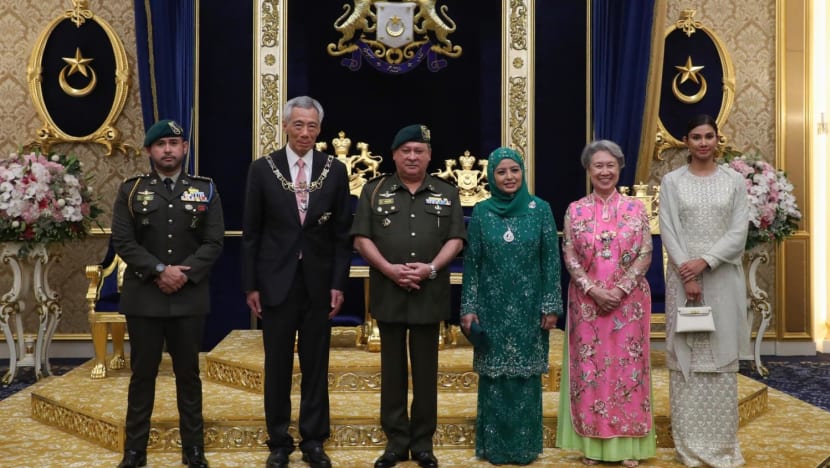
Both countries had first announced that they would set up a task force to study establishing an SEZ at the 16th meeting of the Malaysia-Singapore Joint Ministerial Committee for Iskandar Malaysia in July 2023.
Three months later, at the Singapore-Malaysia Leaders’ Retreat in Singapore, Mr Lee described the proposed SEZ as a "substantial and promising project" which, among other things, should lead to smoother trips for people working on either side of the Causeway.
After Thursday’s signing ceremony, both sides agreed to work towards a full-fledged agreement on the Johor-Singapore Special Economic Zone and provide an update at the 11th Malaysia-Singapore Leaders’ Retreat, to be held in Malaysia this year.
KGV International’s Mr Tan maintained that both leadership transitions should not trigger “fundamental change” in the SEZ agreement.
“Johor Sultan has been a strong advocate of a closer collaboration with Singapore and will continue to be a powerful enabler for such an initiative to be successful,” he said.
“The fourth generation (4G) leaders in Singapore (led by DPM Wong) are also practical and have been engaging with Johor state and Malaysia federal administrations. They are likely to continue the win-win stance in the SEZ initiative,” added Mr Tan.
Mr Ong added that the success of the SEZ is also dependent on how the leading ministries for each country are able to synergise efforts from fellow cabinet members as well as government agencies to conceptualise ideas and execute them effectively.
“The Ministers responsible, Rafizi Ramli and Gan Kim Yong, need to involve as many ministries and agencies as possible in a strategic and consultative manner, so that as many value-added ideas and initiatives can be discussed and put into the framework of the SEZ in a timely fashion,” he added.




















